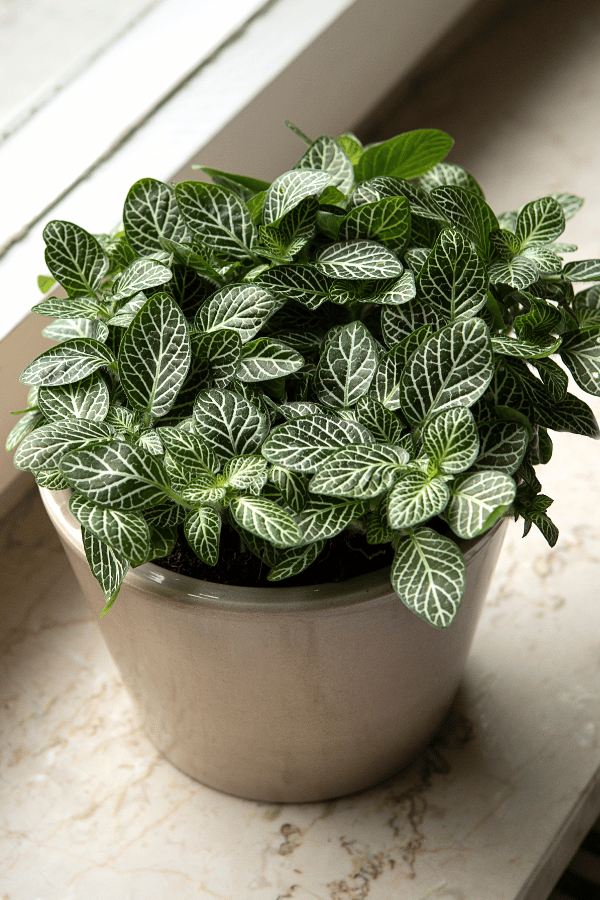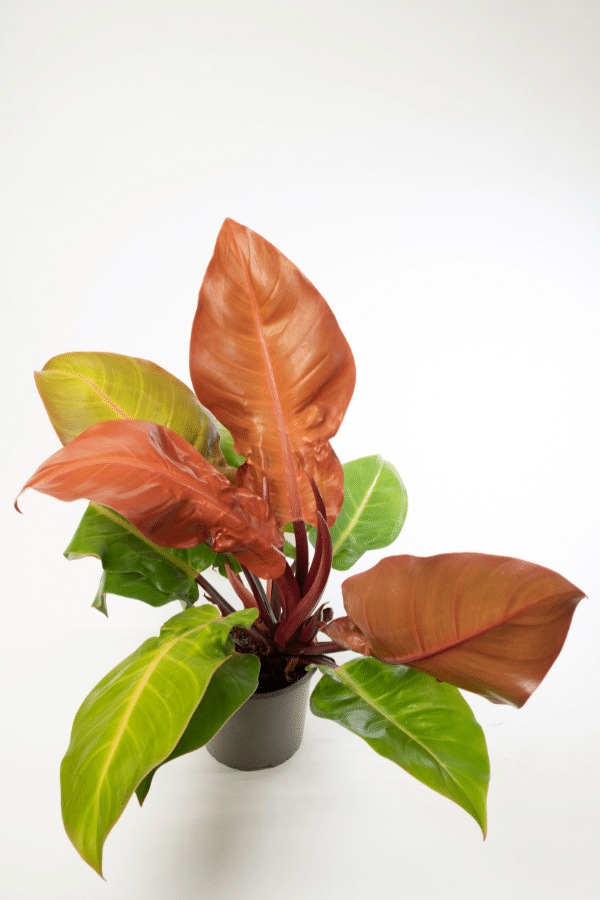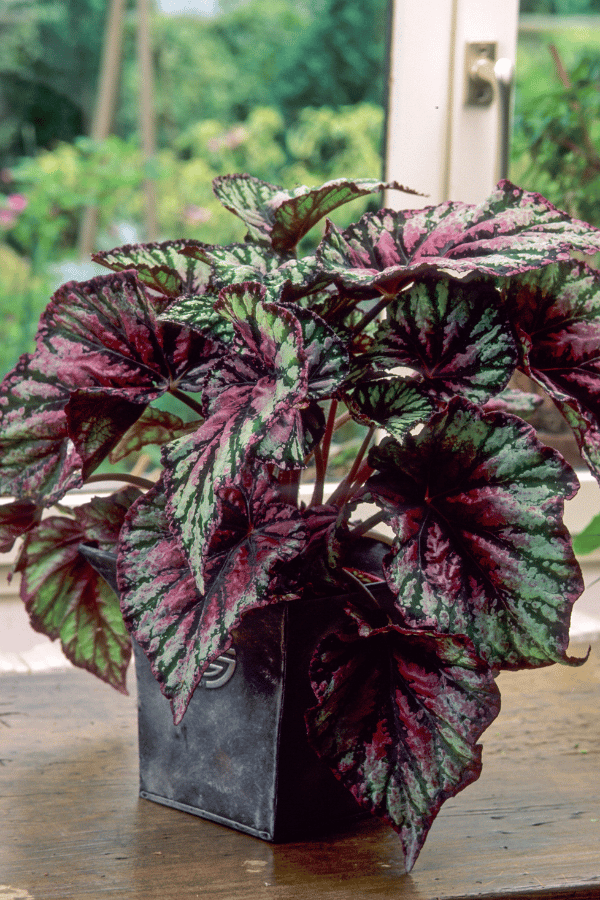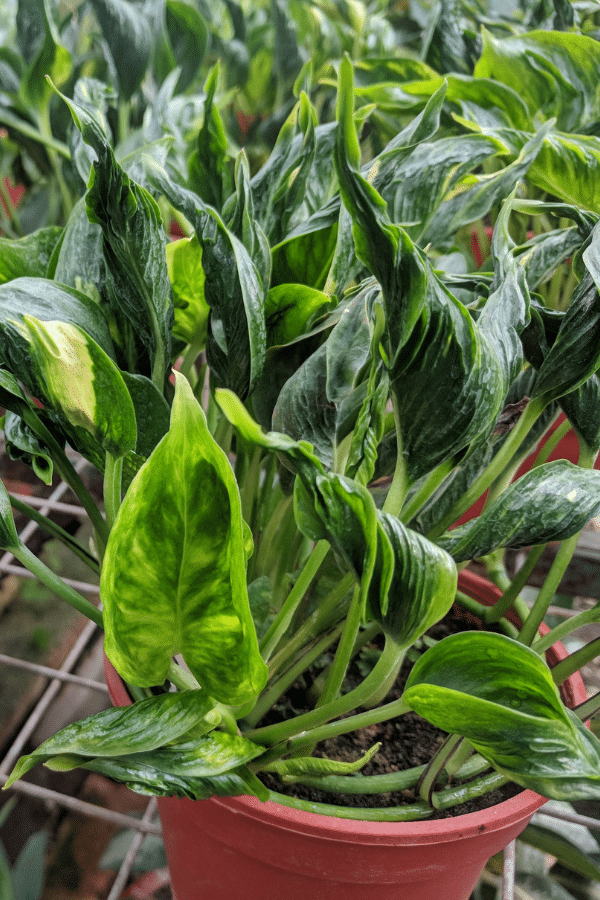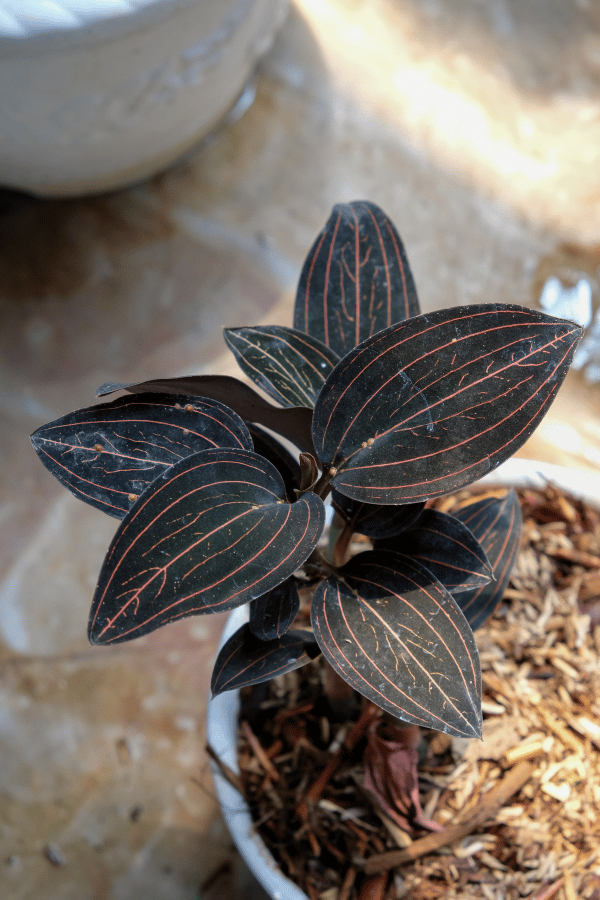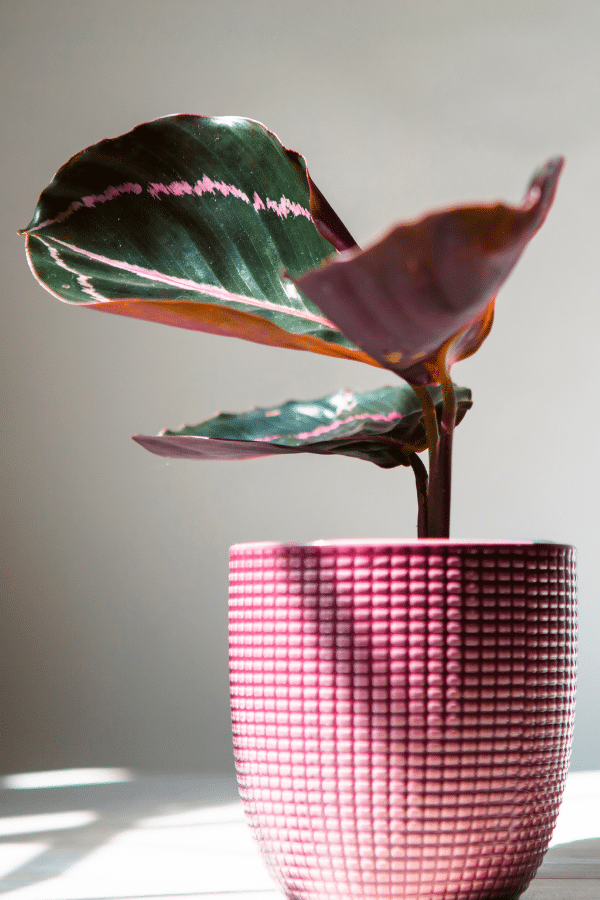Alocasia Azlanii
Scientific Name: Alocasia Azlanii
Common Name: Red Mambo, Jewel Alocasia
Alocasia Azlanii care is relatively easy as it is a very hardy plant and does a good job reviving itself after neglect. Extremely rare, this houseplant is highly sought after.
To give this Alocasia plant the best care, it requires airy well-draining soil, let the top two inches of soil dry out between waterings, provide it bright indirect sunlight, with optimal temperatures from 65-75F.
Quick Care Overview
| Common Name | Jewel Alocasia, Red Mambo |
| Scientific Name | Alocasia Azlanii |
| Family | Araceae |
| Origin | Malaysia |
| Growth Rate | Medium |
| Identification | Deep green to purple waxy oval-shaped leaves |
| Height | Up to 2 feet tall |
| Soil | Well-draining airy soil |
| Water | Let top two inches of soil dry out |
| Temperature | 65-75F |
| Sunlight | Bright indirect light |
| Toxic to Cats & Dogs | Yes |
| Toxic to Humans | Yes |
| Pests | Mealybugs, spider mites, aphids, scale |
| Diseases | Root rot |
Below we will dive deep into this Alocasia Azlanii care guide.
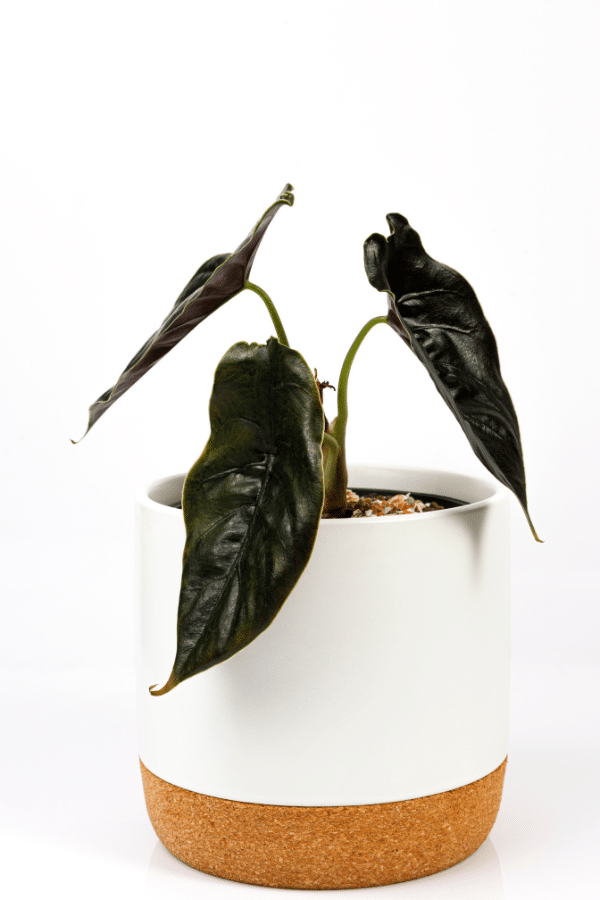
Alocasia Azlanii History
The rare and beautiful Alocasia Azlanii, also frequently called the Jewel Alocasia or Red Mambo, is a collector’s favorite that grows on the tropical island of Borneo and has only recently been cultivated. This plant has been considered one of the world’s most desired houseplants and is quite rare to find.
Alocasia Azlanii Identification
The Jewel Alocasia has slowly unfurling oval-shaped leaves that are deep green, waxy, and have deep purple veins, bright green outlines, and purple undersides. The glossy leaves are said to appear almost metallic.
Alocasia Azlanii Growth Facts
This tropical evergreen plant has a fast growth rate and will reach its mature height within a couple of years.
How Big Does an Alocasia Azlanii Get?
Alocasia Azlanii has a mature height of 2 feet when grown indoors.
Alocasia Azlanii Care
Alocasia Azlanii is a hardy plant that is very rare and special. If given the proper environmental conditions, it can withstand some neglect and revive itself after less than favorable conditions.
Alocasia Azlanii Soil
The Jewel Alocasia likes to have a well-draining, airy soil that is also water retentive. You may create a perfect growing medium by combing standard potting soil with a 2:1 ratio of perlite to coco coir. This Alocasia does not like heavy growing mediums and needs something porous and light.
Alocasia Azlanii Fertilizer
Your Alocasia will benefit from a monthly feeding during the warm growing season from a balanced, diluted liquid fertilizer. Ensure that you follow all label instructions and do not overfertilize. Fertilization should be stopped in the fall and winter during the plants’ dormancy.
Alocasia Azlanii Watering
Alocasia Azlanii should be rewatered after the top 2 inches of soil has dried. This plant-like to remains consistently moist but not oversaturated with water. Ensure that your container has drainage holes and that the plant is not allowed to sit within standing water collected in its drainage tray, as this may lead to root rot. However, underwatering will also cause issues, such as drooping, yellow leaves. Water frequency should be reduced in the winter.
Alocasia Azlanii Light Requirements
For best Alocasia Azlanii care, provide it with bright indirect light, such as from an eastern or western facing window. It is important to note that while this plant may tolerate some direct light, but too much direct sunlight will burn its foliage. This plant also responds well to artificial lights.
Alocasia Azlanii Temperature & Humidity
Being a tropical plant, Alocasia Azlanii likes to be kept between 65 to 75 degrees Fahrenheit. Do not allow your Alocasia to be exposed to temperatures below 60 degrees. This plant does not like sudden fluctuations in temperature and, therefore, should be kept away from heaters, AC units, drafts, and cold windows. This Alocasia prefers to be grown in a higher humidity climate, above 60%. Lower-level humidity will lead to stunted growth or stress. Humidity levels may be increased by misting the leaves of your Alocasia or by installing a humidifier or pebble tray.
Repotting Alocasia Azlanii
As a quick-growing plant, Alocasia Azlanii should be repotted every one to two years. Select a container that is 1-2 inches larger than the previous with drainage holes, repot, tamp lightly, water thoroughly, and place in indirect light. Ensure that you select a container with good drainage.
Alocasia Azlanii Maintenance & Pruning
This is considered an extremely easy plant to care for and requires little pruning. Dead, diseased, or discolored leaves may be removed periodically as needed.
Alocasia Azlanii Propagation
This Alocasia is quite rare and may be pretty costly. It is reassuring to know that you may propagate it from root division. Propagation should be done in spring or summer. First, you should remove the plant from its container. Next, you should divide the rhizome with a clean, sharp blade. Then you will plant the separated rhizomes into their own containers with fresh soil. Lightly tamp the soil down, water the plants thoroughly, and place them in indirect light.
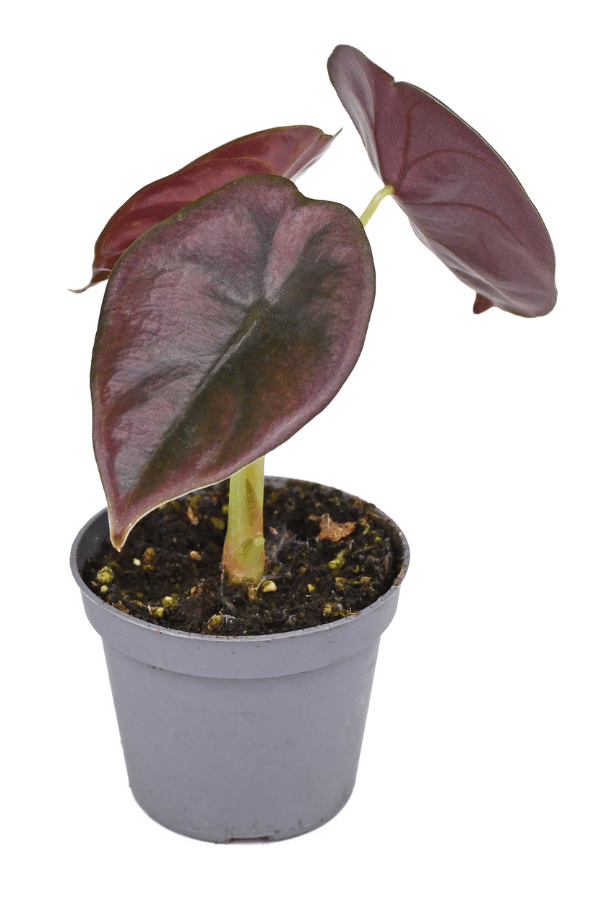
Alocasia Azlanii Toxicity
Alocasia Azlanii is a toxic houseplant to humans, cats, and dogs. This plant should never be ingested and hands should be washed after handling this plant.
Toxicity to Humans
This plant contains calcium oxalate crystals, which are considered toxic to humans. It will irritate the mouth and digestive tract if consumed. Therefore, this plant should not be ingested.
Toxicity to Cats & Dogs
Alocasia Azlanii is considered toxic to pests and should not be consumed. If you suspect your pet has ingested any portion of this plant, contact your veterinarian or animal poison control center immediately.
Alocasia Azlanii Problems
Alocasia Azlanii Leaves Turning Yellow
When the foliage of this Alocasia turns yellow, it is often indicative of either too wet or too dry soil. Ensure that you only rewater your Alocasia after the top 2 inches of soil has become dry.
Alocasia Azlanii Leaves Turning Brown
When it comes to Alocasia Azlanii, foliage may become browned due to low humidity or too dry of soil. Therefore, when foliage is seen browning, you should increase the humidity level of your plant’s environment.
Alocasia Azlanii Diseases
Being a hardy plant, Alocasia Azlanii is considered mostly disease resistant. However, if overwatered this plant may suffer from diseases related to overwatering, such as root rot.
Alocasia Azlanii Pests
Like many other indoor houseplants, Alocasia Azlanii may suffer from houseplant pests from time to time. Alocasia plants have been known to become susceptible to spider mites, mealybugs, scale, and aphids. Upon identifying a pest infestation, isolate your plant, and treat it with a pesticide such as neem oil or insecticidal soap.

